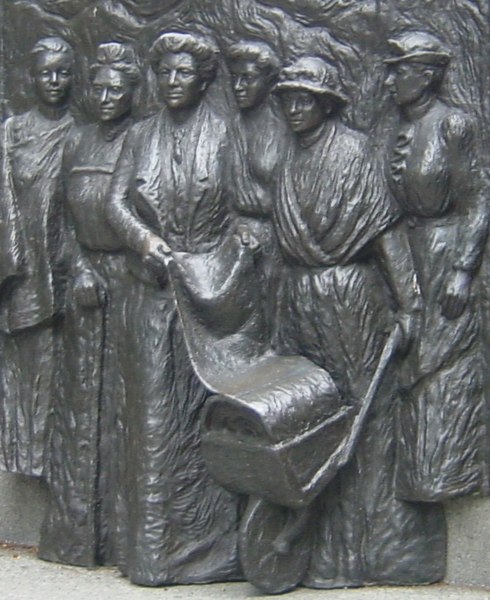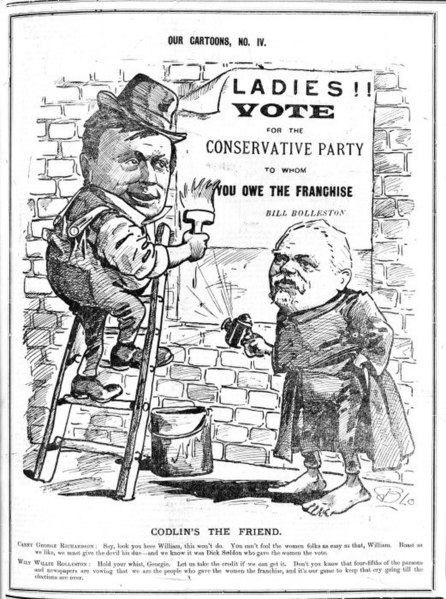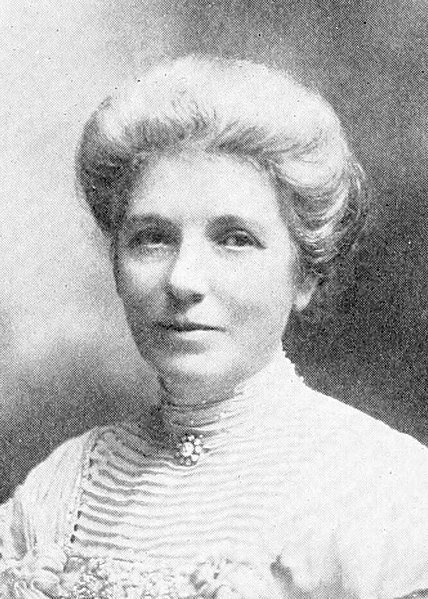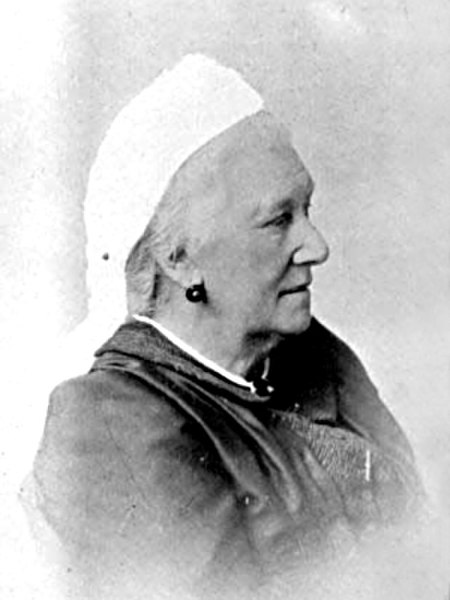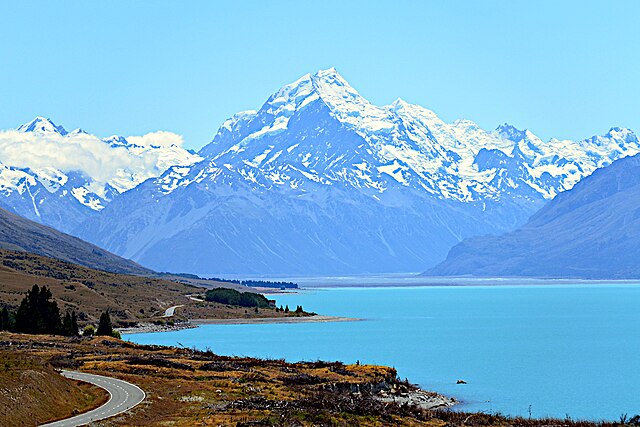Women's suffrage in New Zealand
Women's suffrage was an important political issue in the late-nineteenth-century New Zealand. In early colonial New Zealand, as in European societies, women were excluded from any involvement in politics. Public opinion began to change in the latter half of the nineteenth century and after years of effort by women's suffrage campaigners, led by Kate Sheppard, New Zealand became the first nation in the world in which all women had the right to vote in parliamentary elections.
Bas-relief of suffragists on the Kate Sheppard National Memorial, Christchurch. The figures shown from left to right are Meri Te Tai Mangakāhia, Amey Daldy, Kate Sheppard, Ada Wells, Harriet Morison, and Helen Nicol.
An 1893 cartoon depicting William Rolleston urging women to vote for the Conservative Party to whom they "owe the franchise".
Kate Sheppard, New Zealand's leading suffrage campaigner, appears on the current New Zealand ten-dollar note.
Mary Ann Müller, a pioneering campaigner for women's suffrage and other women's rights
New Zealand is an island country in the southwestern Pacific Ocean. It consists of two main landmasses—the North Island and the South Island —and over 700 smaller islands. It is the sixth-largest island country by area and lies east of Australia across the Tasman Sea and south of the islands of New Caledonia, Fiji, and Tonga. The country's varied topography and sharp mountain peaks, including the Southern Alps, owe much to tectonic uplift and volcanic eruptions. New Zealand's capital city is Wellington, and its most populous city is Auckland.
The Waitangi sheet from the Treaty of Waitangi
A meeting of European and Māori residents of Hawke's Bay Province. Engraving, 1863.
The snow-capped Southern Alps dominate the South Island, while the North Island's Northland Peninsula stretches towards the subtropics.
Aoraki / Mount Cook is the highest point in New Zealand, at 3,724 metres.

